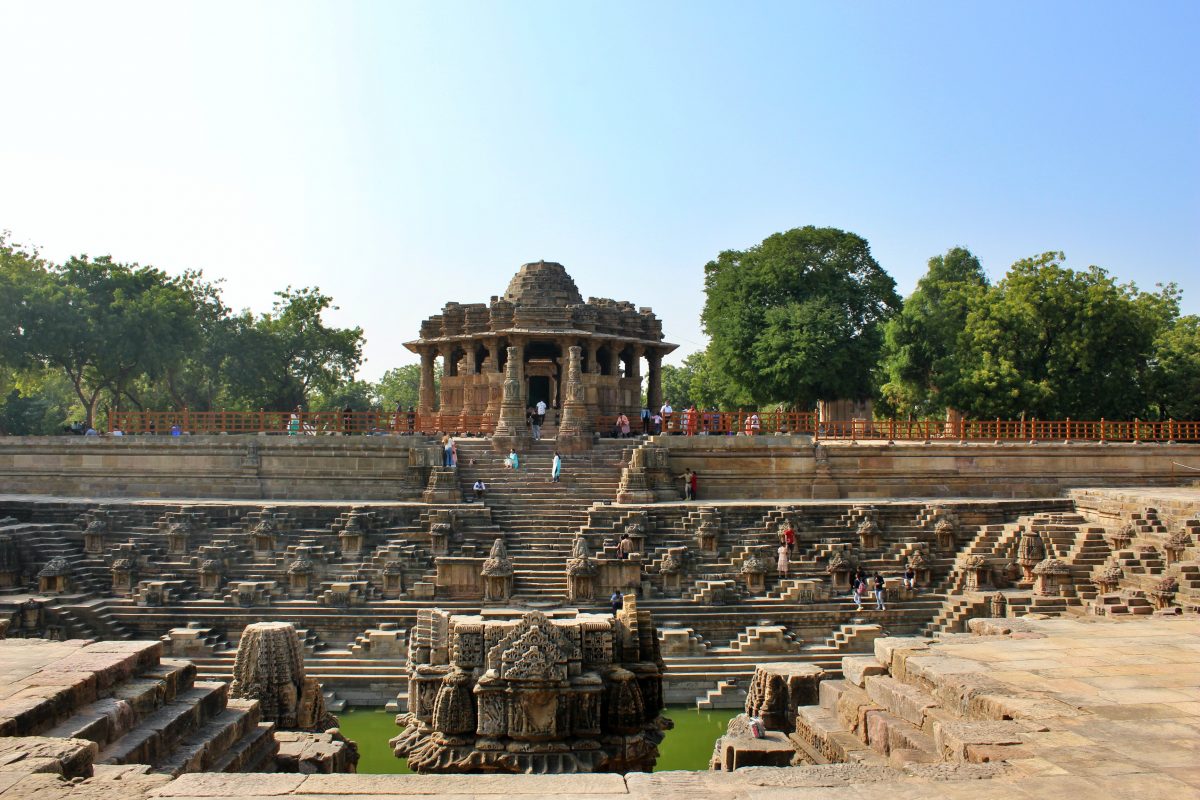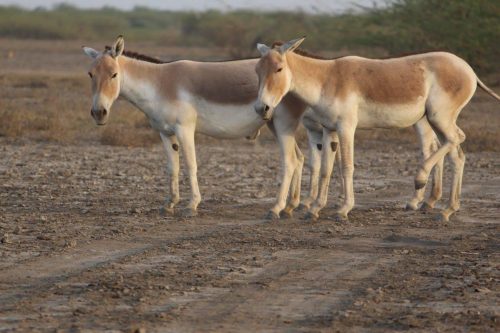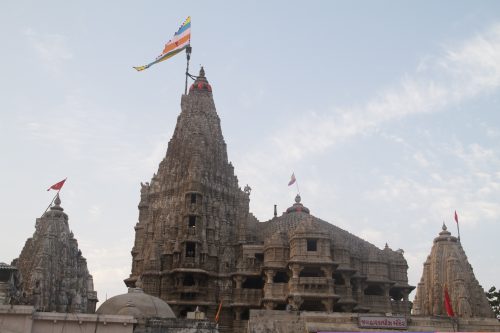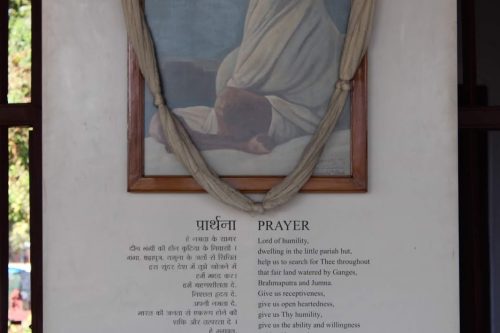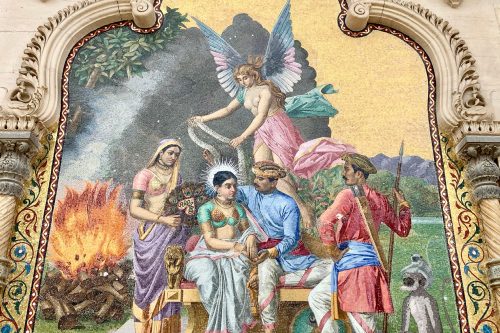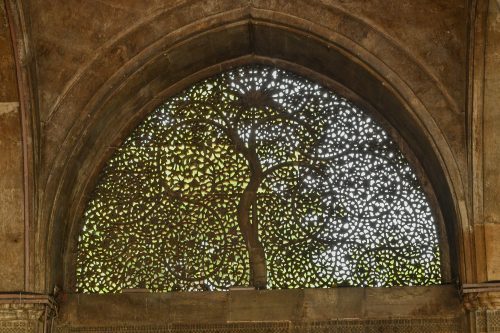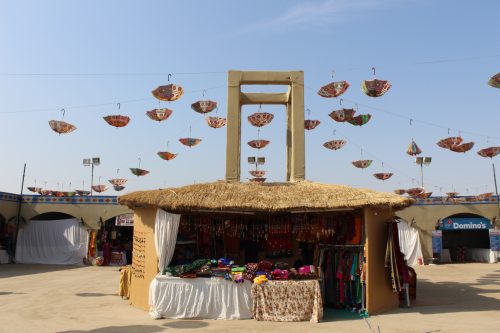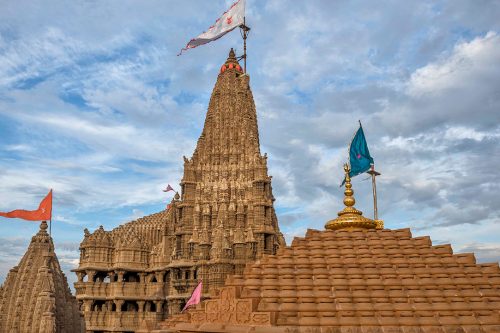Ahmedabad – visited, revisited, explored, seen, experienced, said the one who travels often to this World Heritage City. Suggest someplace new, please. “How about a walk through chapters of history, stanzas of exquisite carvings, paragraphs of architectural marvels, and tattered dog-eared papers of thousands of years ago?”, suggested another.
And off we embark on this one-of-a-kind excursion which takes you to two of the most beautiful architectural wonders from thousands of years ago, one of these wonders was obscurely hidden from the world and buried under the silt of the now-extinct Saraswati river and the other is a creation that can amuse a common man and a scientist alike. I am taking you to Modhera and Patan today. Let’s go!
A hearty breakfast is a must before you embark on this day-long excursion. Leave early so that you get leisurely time at both these monuments and yet return to Ahmedabad in time for your evening tea.
First, Patan: The world-famous Patola weave haven
Patan is on the World map for two major reasons – one, the GI-tagged Patola weave sarees are from this small village of weavers, and second, the World Heritage site of Rani Ki Vav is located here. The same monument that has marked its presence on a hundred rupee note too.
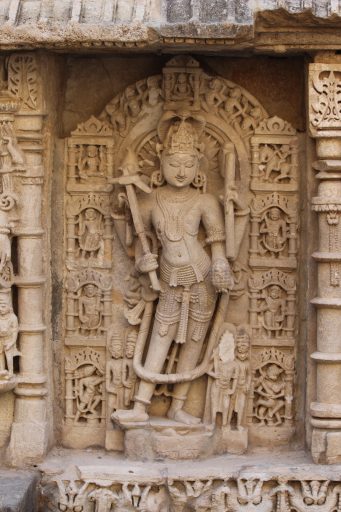
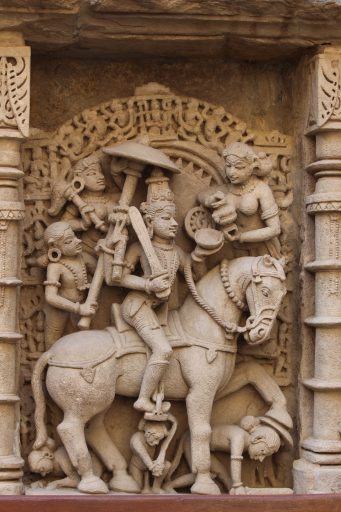

Step wells are the motels of yore. Tired weary travellers would rest here where there was an abundance of fresh drinking water, food, and a recharging station for their e-vehicles (alright, not exactly an ‘e’ vehicle but green and sustainable nonetheless- the horses, camels and the likes). Step wells were also the cafés where kitty parties were organised, well in a way. Women would meet up at step wells on the pretext of ‘fetching a pail of water’ and unlike Jack n Jill, they did not fall down but sat down to have those saas-bahu chats. Am assuming that saas-bahu matters must be as old as time immemorial.
Imaginations galore! Step wells were perfect examples of rainwater harvesting, community service, and a civilisation thriving in harmony.
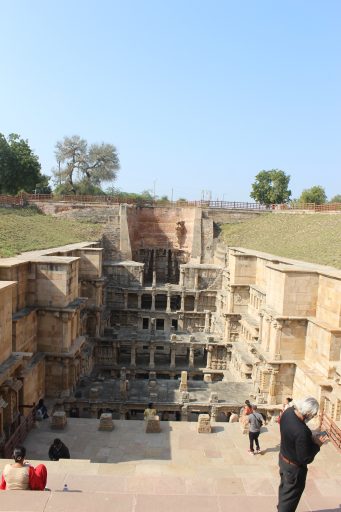
UNESCO World Heritage monument of Rani Ki Vav – Built in the memory of 11th-century Chalukya King Bhima-I by his loving consort Rani Udyamati, is adorned with beautifully carved relief sculptures of Gods and Goddesses, and other articles of everyday life of those times. The Vav unexpectedly rises in front of your eyes as you search for it in the beautifully manicured surrounding gardens. Silted over and hidden from the world, this majestic stepwell has been painstakingly, one brushstroke at a time, revealed and brought to us by The Archaeological Survey of India. The ASI maintains the pristine beauty of the monument with utmost care. Unlike the usual step wells, Rani Ki Vav has just one facade that rises or rather dips down majestically in front of your awed eyes! From atop the well, you can have a complete view of the monument, take innumerable pictures and indeed exclaim in amazement. A closer look reveals the exquisitely carved sculptures, those of Gods and Goddesses and of other celestial beings. These sculptures symbolise water and fertility. Many apsaras and nagakanyas adorn the inner walls and vertical panels of the well. Other celestial beings like the Digpalas (custodians of the directions), asuras, yoginis, and other birds and animals are also beautifully depicted on the walls. Another major attraction is the depiction of Lord Vishnu (the water God) in three niches of the well.
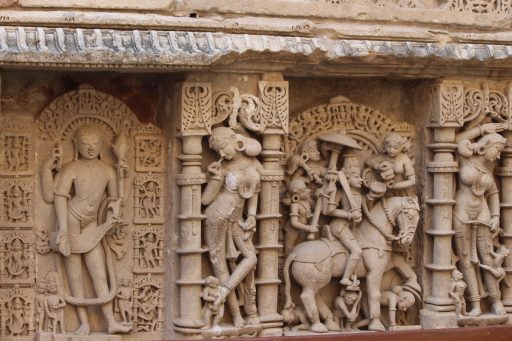
One can only marvel and wonder at the scientific knowledge of the masons and architects of those times who brought this beautiful creation to life, even leaving their signatures here and there in the form of mason’s marks. Wooden pegs that held the rock bricks together, and supporting pillars that gave strength to the structure and prevented it from caving in, are all examples of ancient architectural knowledge.
Each sculpture that one sees inside the well has a certain explanation and story to it which of course should be left for the guide to share when you physically visit the monument. One particular pattern that one can not miss is the geometrical designs on the walls of the well that have proudly taken a spot on the famous Patola sarees. The unmissable patterns are intricate lattices of Swastikas, Triangles, Rectangles, and other geometrically symmetrical patterns.
A little bit about Patola :
The world-famous weave takes a lot of planning and calculations to be put together. First and foremost is to prepare the “blueprint” of the pattern. Blueprint – because we are creating an exceptional marvel in each saree and it requires as thorough a planning as is required while creating a skyscraper maybe! The thread then is dyed as per the pattern; measured, marked, and dyed to accuracy so that the colours fall corresponding to their respective places. Phew! So much of an effort and we bargain for a discount! One double-ikkat Patola takes anything between 3-9 months to complete and no two Patolas are alike. Now there are only a handful of weavers who are carrying on with this legacy, the younger generation is not motivated enough to join the family tradition of creating these Patola weaves.
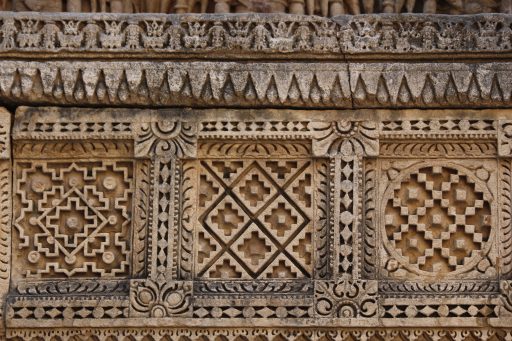
Our second attraction – The Sun Temple at Modhera.
Older than the other famous cousin, Sun Temple of Konark, Modhera precedes Konark by around a hundred and twenty-five years. The temple comprises three components- a Gudhamandapa (prayer hall), a Sabhamandapa (assembly hall), and a Kund (reservoir). The wonder though lies in the fact that the Tropic of Cancer bisects the Temple complex (yes all three components) in equal halves, and during the equinoxes, the rays of the rising sun fall straight where once the deity graced a throne, passing through yes! you guessed it right – all three components again.
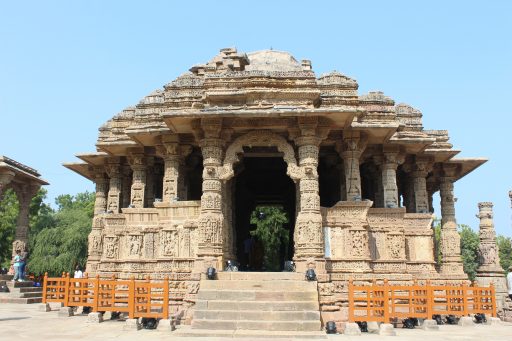
The temple from the Solanki dynasty era was built around the time when the forces and elements of nature took the center stage as Gods and Goddesses. Air, water, fire, earth, and sky were venerated and worshipped. The temple complex exudes a certain peace and charm and radiates certain energy which would leave you calm and composed and would serve as the biggest de-stressor.
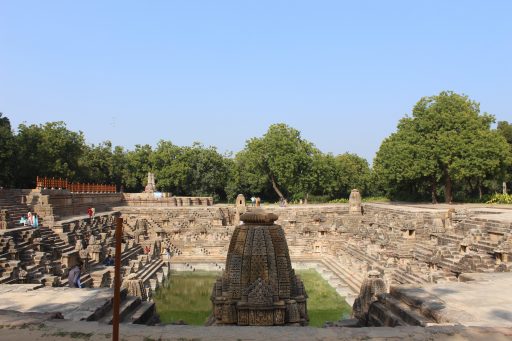
As one crosses over the main gates of the complex and walks towards the temple, the first marvel to greet is the Kund, also known as the Ramakund. Served as a purifying and cleansing water body for the weary visitors who undertook days or weeks-long journeys to come here, the Kund also has 108 small and big temples/shrines. The rectangular reservoir has comfortable steps that lead one down to the water level and are built in such a pattern that the bathers get privacy too.
Next is the Sabhamandapa, adorned with beautifully carved pillars and walls, with twelve Adityas all around – the twelve versions of the Sun, each representing a month of the calendar. Scenes of Mahabharata can also be seen carved on a few pillars.
An expert tip: Do take a selfie with the ceiling of the Mandapa, which comes out exceptionally well.
The most magical of the three components of the temple is the Gudhamandapa, the throne of the deity. Though now, the spot where God once presided is empty, the straight piercing rays of the Sun during the equinoxes penetrate the three components and brightly illuminate not just the spot but the entire shrine. This isn’t all to marvel at, hold the compass on your phone and be equally amused. The tropic of cancer passes through the temple and bisects the whole complex in two equal halves.
The Gudhamandapa, like the other sections, is equally beautiful with carvings on its pillars and walls. The pillars are covered with intricately carved statues of men and women, one particularly noticeable is that of a mother holding a baby in her arms.
After the Gudhamandapa, step out to take a leisurely walk around the temple, marvelling at and clicking pictures of the carvings on the outer walls of the temple. Surya (Sun God) is shown in many different avatars, dancers, apsaras, animals and birds and many other interesting sculptures are sure to hold your attention for long.
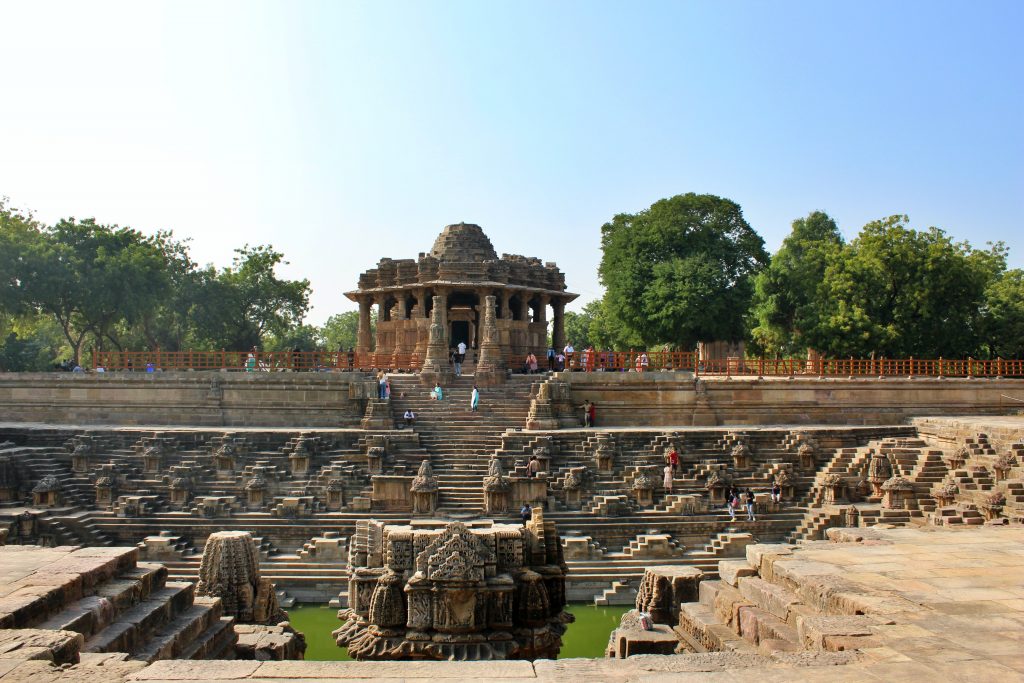
The Archaeological Survey of India ensures that these monuments are immaculately preserved and taken care of. Click to your heart’s content as they generously allow the tourists to take as many pictures as they might want. The only request: be a responsible tourist.
Time for us to head back to Ahmedabad after a drink of cool and refreshingly clean water. Though there are a few eating joints along the road, we recommend you carry a packed lunch with you.
An expert tip: A visit to a place like Modhera and Patan must not be forgotten with time, it should be chronicled in a journal with photos and illustrations.
Tea at one of the on-the-way places or your hotel at Ahmedabad – the choice is yours. Our promise: this is one excursion that you would want to take over and over again. Cherish the day’s experience till we come back with yet another account of yet another interesting outing.
Till then, happy holidaying!

